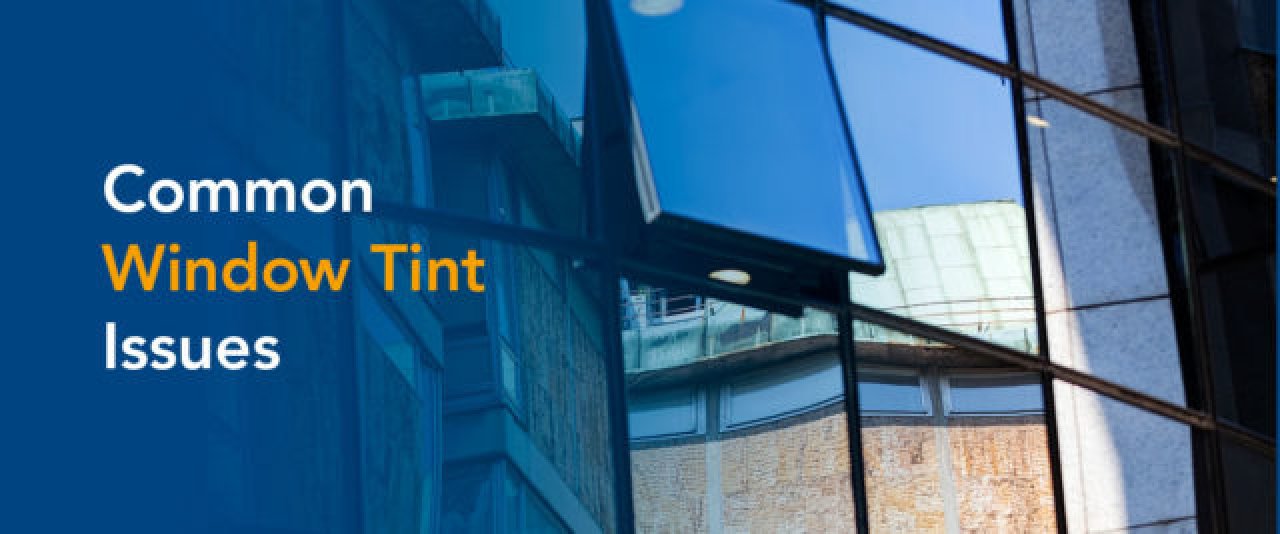Car Tint: The Best Window Film for Your Vehicle in 2023
Jun 6, 2023

By: David Smith
Are you considering window tint for your vehicle but feeling overwhelmed by the choices and technicalities? Worry no more! In this comprehensive guide, you'll discover the benefits, drawbacks, types, and legal aspects of car tint, as well as tips on installation, maintenance, and customization. So, buckle up and let's explore the world of car tint and automotive window tinting!
Short Summary
Window tinting offers a range of benefits, including UV protection, glare reduction and increased privacy.
Different types of car tint are available to meet individual needs. Consider heat blockage abilities, quality and darkness/reflectivity when selecting the right window film for your vehicle.
Automotive tint provides safety & security benefits such as blocking UV rays & deterring theft or vandalism - allowing enhanced peace of mind.
Understanding Car Tint: Benefits
Window tinting offers numerous benefits that enhance your driving experience and protect both your vehicle and its occupants. From blocking harmful UV rays and reducing glare to increasing privacy and protecting from shattering glass, window tint can make a significant difference in your daily commute.
Let's delve deeper into these advantages.
Protection from UV rays

Did you know that prolonged exposure to ultraviolet (UV) radiation can damage your car's interior, causing fading and cracking of the dashboard, and even harm your skin? Window tint effectively blocks the majority of the sun's heat-producing radiation, offering protection from these harmful UV rays.
Imagine cruising down the highway knowing that your car's interior and your skin are protected from the sun's damaging effects. That's the power of tinting!
Reduced glare
Glare in a car can come from various sources such as sunlight, headlights of other vehicles, and reflections from reflective surfaces. Car tinting reduces the sun's glare, improving visibility and alleviating eye strain.
Imagine driving into the sunset without squinting or struggling to see the road ahead – that's the advantage of reduced glare provided by window tint.
Increased privacy
Increased privacy in a car offers a sense of security, deters theft, guards personal items, reduces distractions, and creates a more comfortable atmosphere for passengers to unwind or work.
By tinting your car’s windows you provide a layer of privacy for the occupants, giving you peace of mind and a sense of personal space even on the busiest roads.
Protection from shattering glass
Shattering glass in a car can reduce visibility, heighten the potential for injuries during a collision, and pose a risk of harm to occupants from sharp glass shards. Car tint may help to keep shattered glass together, increasing safety and minimizing the risk of injury in case of an accident.
It's reassuring to know that your window tint is working behind the scenes to provide an extra layer of protection for you and your passengers.
Drawbacks of Window Tinting

While car tinting offers numerous benefits, it's essential to consider the potential drawbacks, such as reduced visibility, difficulty cleaning windows, and potential damage to window defrosting lines and seals.
Let's take a closer look at these challenges and how to address them.
Reduced visibility
Window tinting can diminish visibility, making it harder to see out of the windows, especially at night or in adverse weather conditions. To ensure optimal visibility, drivers should reduce their speed and utilize windshield wipers, defrosters, and headlights as necessary.
Also, it's important to comply with state and provincial laws regarding tint darkness and reflectivity to maintain a balance between privacy and safety.
Difficulty cleaning windows
To properly clean tinted windows, it's essential to use a gentle cleaning agent or water and abstain from products containing ammonia, as they may cause discoloration and harm to the tint.
A soft microfiber cloth is recommended for cleaning tinted windows, and it's crucial to wipe in a single direction to avoid streaks and smudges. See below for more on maintaining your window tint.
Potential damage to window defrosting lines
Car tint may cause harm to window defrosting lines, as they are constructed with thin metal and can be easily damaged when removing the tint. To avoid damage to window defrosting lines, it's recommended to use high-quality installation services (find a dealer) and products, ensuring that no harm is caused to the defroster..

Car Tint Types
Now that you have a clearer understanding of the benefits and drawbacks of window tinting, let's explore the different types of car tint available: ceramic window tint, metallic window tint, and dyed window tint.
Each type offers unique advantages and characteristics, so it's important to choose the one that best suits your needs and preferences.
Ceramic Window Tint
Ceramic window tint is a highly advanced nano-ceramic design that effectively blocks heat-generating infrared rays while safeguarding against damaging UV rays. This type of tint does not impede radio, cellular, or Bluetooth signals, making it an excellent choice for those who value connectivity.
With ceramic window tint, you can enjoy maximum heat blocking capabilities and stay cool and comfortable on the road.
Metallic Window Tint
Metallic window tint provides superior UV ray protection and creates a sleek, "blacked out" appearance that adds a level of privacy. This type of tint offers a higher level of heat rejection with a slightly more reflective finish, giving your vehicle a modern and stylish look.
By using Madico's metallic window tint, you can enjoy the benefits of this high-performance tint without worrying about any interference with radio, cellular, or Bluetooth signals. Stay connected while experiencing the advantages of our product.
Dyed Window Tint
Dyed window tint is a type of car tint that provides UV protection and a durable finish. This tint does not impede radio, cellular, or Bluetooth signals, making it a reliable choice for those who prioritize connectivity.
Dyed window tint offers an improvement in factory glass performance without a noticeable darkening of the windows, providing a subtle upgrade to your vehicle's appearance.
Selecting the Right Window Tint for Your Vehicle

With a variety of car tint types and benefits, selecting the right window tint for your vehicle can be a daunting task. In this section, we'll discuss the factors to consider when choosing tint film, price differences between types of tint film, and the pros and cons of choosing a professional installer vs. DIY.
Factors to consider when choosing tint film
When selecting the right window tint for your vehicle, it's essential to consider factors such as heat blockage abilities, quality, darkness/reflectivity, type, UV protection, relevant laws and regulations, and purpose.
Each type of tint film offers unique advantages, so carefully evaluate your needs and preferences to make an informed decision.
Price differences between types of tint film
The cost of tint film may differ based on the type of film, the quality of the film, and the size of the window. Typically, ceramic tint film is the most expensive, followed by metallic tint film, and then dyed tint film.
Keep your budget in mind when selecting the right window tint for your vehicle, but also consider the long-term benefits and performance of the tint.
Choosing a professional installer vs. DIY
When it comes to installing car tint, you have the option of hiring a professional installer or attempting a DIY installation. A professional installer provides expertise and proficiency, guaranteeing that the tint is installed correctly the first time. However, this option can be more costly and time-consuming.
DIY tinting may be less expensive and quicker, but it can be challenging to ensure proper installation, leading to potential damage to the window film or vehicle. Carefully weigh the pros and cons before deciding on the best installation method for your needs.

Legal Aspects of Car Tinting: State Regulations and Restrictions
Laws governing car tinting vary by state, with some states allowing darker tints than others. It's crucial to familiarize yourself with the legal restrictions in your state to ensure compliance and avoid potential fines or penalties.
Remember, adhering to state regulations on car tinting is not only a legal obligation, but also a safety measure to protect you and other road users.
Maintaining Your Automotive Window Tint

Proper maintenance is essential to keep your car tint looking its best and ensure its longevity. To maintain your automotive window tint, avoid using harsh chemicals and opt for a gentle cleaning agent or water. Use a soft microfiber cloth for cleaning to prevent scratches and damage to the tint.
Consistent care will help preserve your window tint and keep your vehicle looking sharp.
Safety and Security Benefits of Car Tint

Car tint provides safety and security benefits beyond those already discussed in this guide. By blocking harmful UV rays and offering privacy, car tint can help deter theft and vandalism, as well as work in conjunction with security systems for homes and businesses.
Tinted windows means you can enjoy added peace of mind on and off the road.
Car Tint Removal: When and How to Do It
At some point, you may need to remove or replace your car tint. It's essential to know when and how to remove car tint safely and effectively. Car tint should be removed when it becomes damaged, faded, or bubbled, or when you plan to replace it with a new tint.
Use a razor blade or heat gun to carefully scrape off the tint and a special solution to dissolve the adhesive. With the right tools and techniques, car tint removal can be a straightforward process.
Summary
In this comprehensive guide, we've explored the benefits, drawbacks, types, and legal aspects of car tinting, as well as tips on installation, maintenance, and customization. By understanding the various factors and options available, you can make an informed decision and choose the right window tint for your vehicle. Remember, the right car tint not only enhances your vehicle's appearance, but also provides protection and comfort for you and your passengers. Now it's time to hit the road and enjoy your newly tinted ride!
Frequently Asked Questions
What is legal tint in TN?
In Tennessee, legal car window tinting must provide for at least 70% of visible light transmission on the windshield and 35% of visible light transmission on side and back windows.
Metallic or mirrored tints are prohibited.
Is 20% tint legal in Florida?
In Florida, it is illegal to have 20% tint darkness for your vehicle's front portion. However, passenger cars can have 15% while the multipurpose vehicle can have 6% tint darkness on the back windows.
Therefore, in summary, 20% tint darkness is not legal in Florida.
What is the legal tint limit in Florida?
In Florida, the legal tint limit requires that front side windows must allow more than 28% of light in, back side windows must allow more than 15% of light in, rear windows must allow more than 15% of light in, and front windshield must be non-reflective tint above the manufacturer's AS-1 line.
Additionally, all rear windows can have a maximum reflection of 35%.
Is there a tint law list for US? Canada?
Yes, The IWFA (International Window Film Association), a major trade group, publishes a list of tint laws for both the United States and for Canada.


